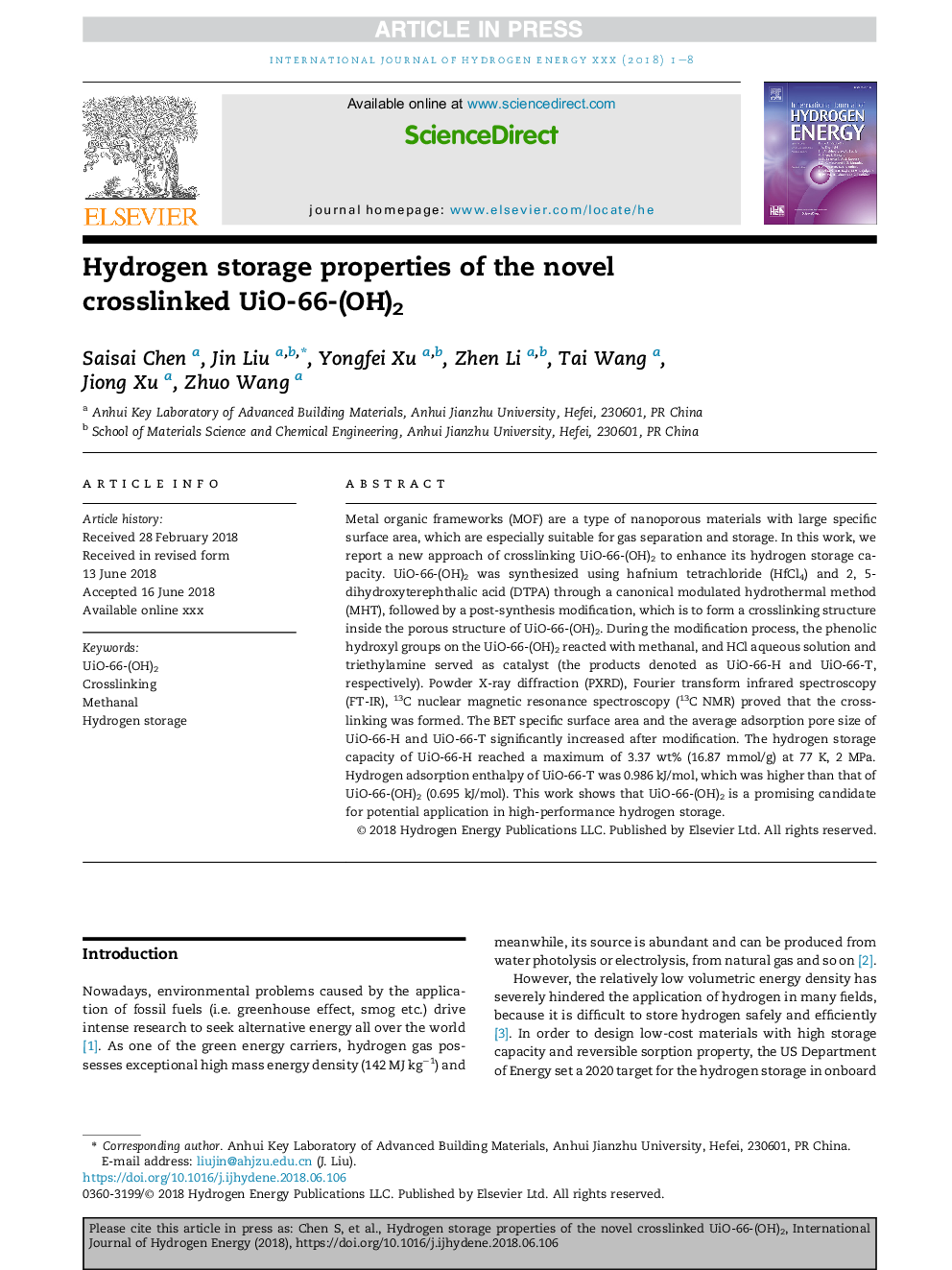| Article ID | Journal | Published Year | Pages | File Type |
|---|---|---|---|---|
| 7705330 | International Journal of Hydrogen Energy | 2018 | 8 Pages |
Abstract
Metal organic frameworks (MOF) are a type of nanoporous materials with large specific surface area, which are especially suitable for gas separation and storage. In this work, we report a new approach of crosslinking UiO-66-(OH)2 to enhance its hydrogen storage capacity. UiO-66-(OH)2 was synthesized using hafnium tetrachloride (HfCl4) and 2, 5-dihydroxyterephthalic acid (DTPA) through a canonical modulated hydrothermal method (MHT), followed by a post-synthesis modification, which is to form a crosslinking structure inside the porous structure of UiO-66-(OH)2. During the modification process, the phenolic hydroxyl groups on the UiO-66-(OH)2 reacted with methanal, and HCl aqueous solution and triethylamine served as catalyst (the products denoted as UiO-66-H and UiO-66-T, respectively). Powder X-ray diffraction (PXRD), Fourier transform infrared spectroscopy (FT-IR), 13C nuclear magnetic resonance spectroscopy (13C NMR) proved that the crosslinking was formed. The BET specific surface area and the average adsorption pore size of UiO-66-H and UiO-66-T significantly increased after modification. The hydrogen storage capacity of UiO-66-H reached a maximum of 3.37Â wt% (16.87Â mmol/g) at 77Â K, 2Â MPa. Hydrogen adsorption enthalpy of UiO-66-T was 0.986Â kJ/mol, which was higher than that of UiO-66-(OH)2 (0.695Â kJ/mol). This work shows that UiO-66-(OH)2 is a promising candidate for potential application in high-performance hydrogen storage.
Keywords
Related Topics
Physical Sciences and Engineering
Chemistry
Electrochemistry
Authors
Saisai Chen, Jin Liu, Yongfei Xu, Zhen Li, Tai Wang, Jiong Xu, Zhuo Wang,
